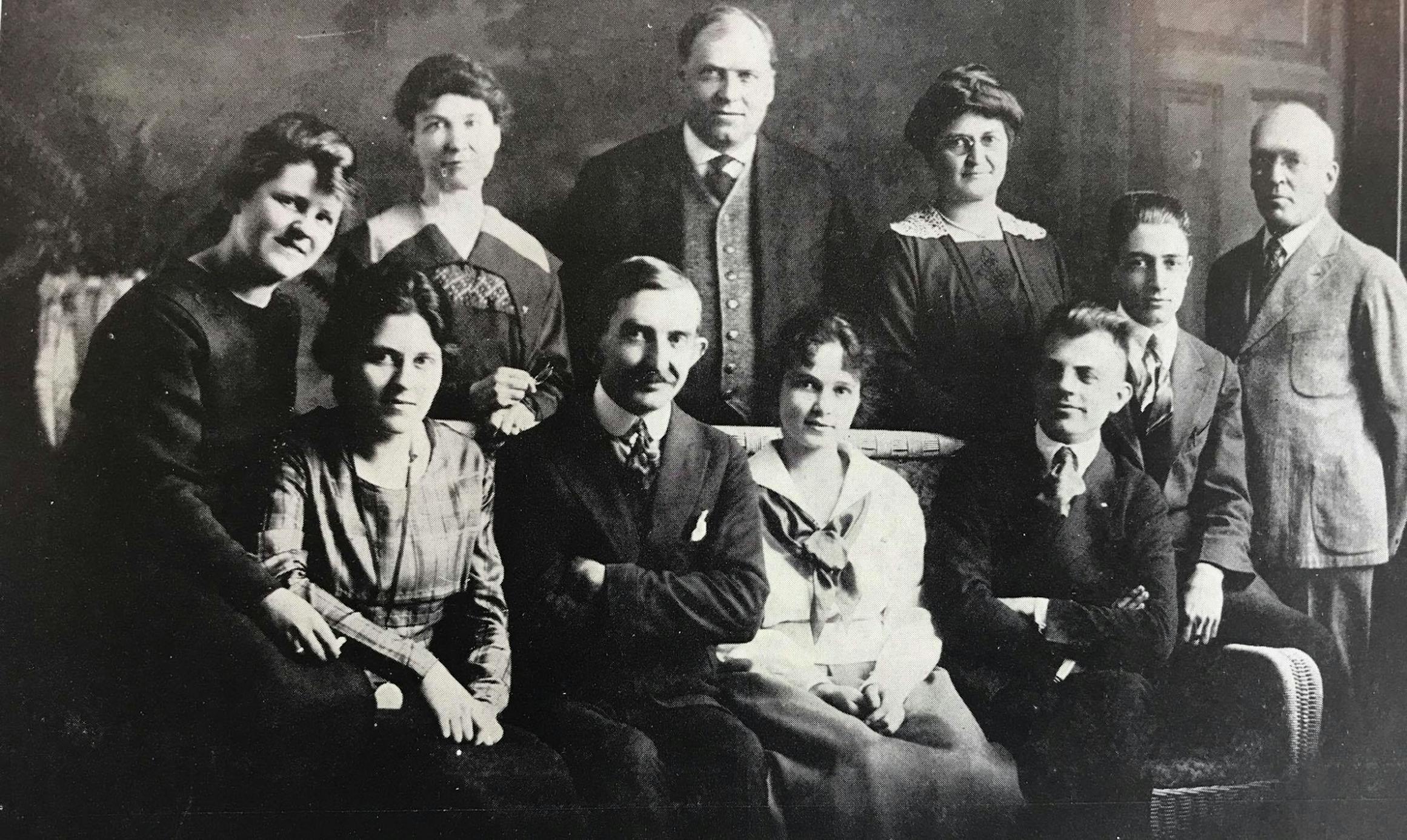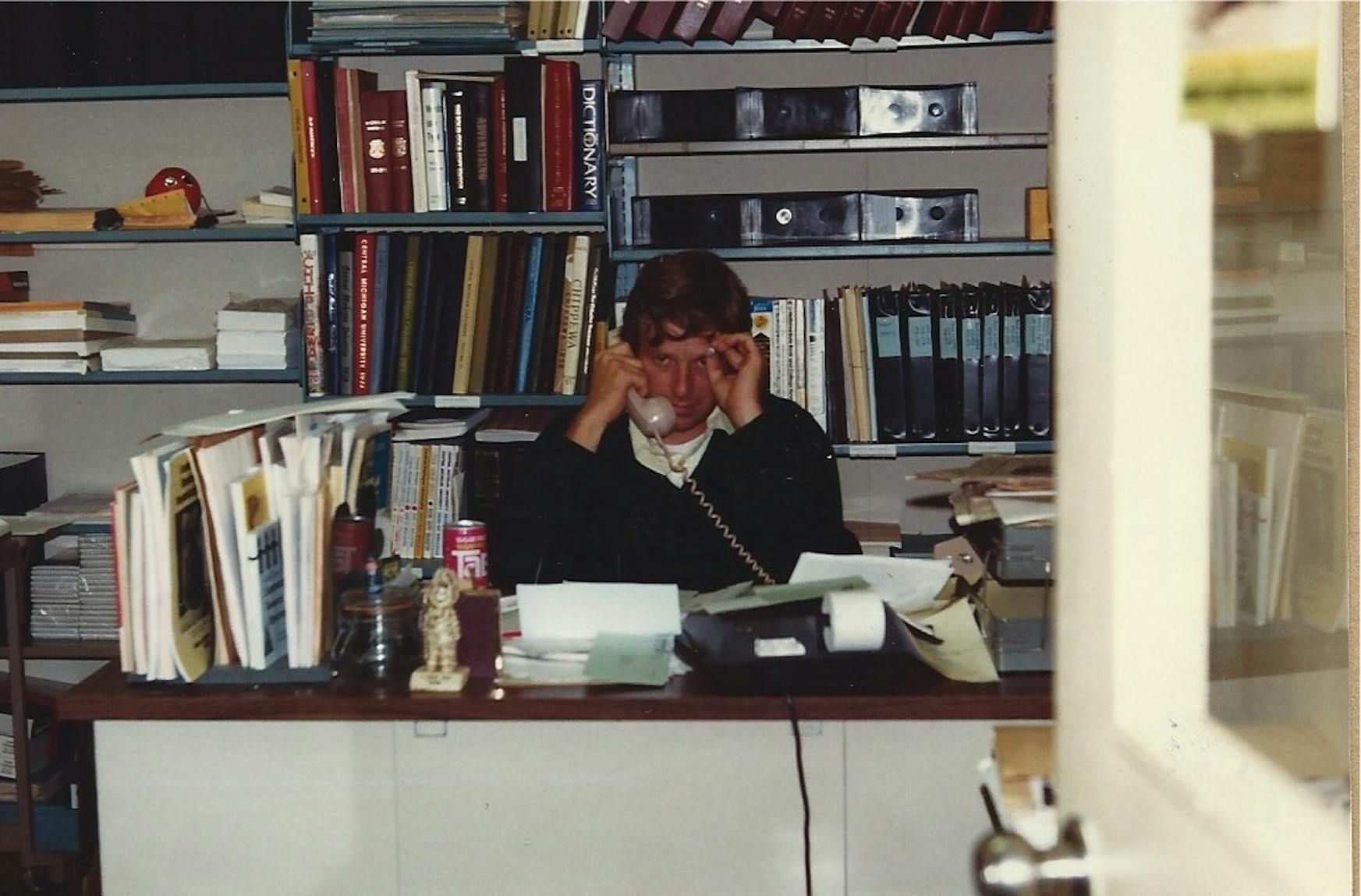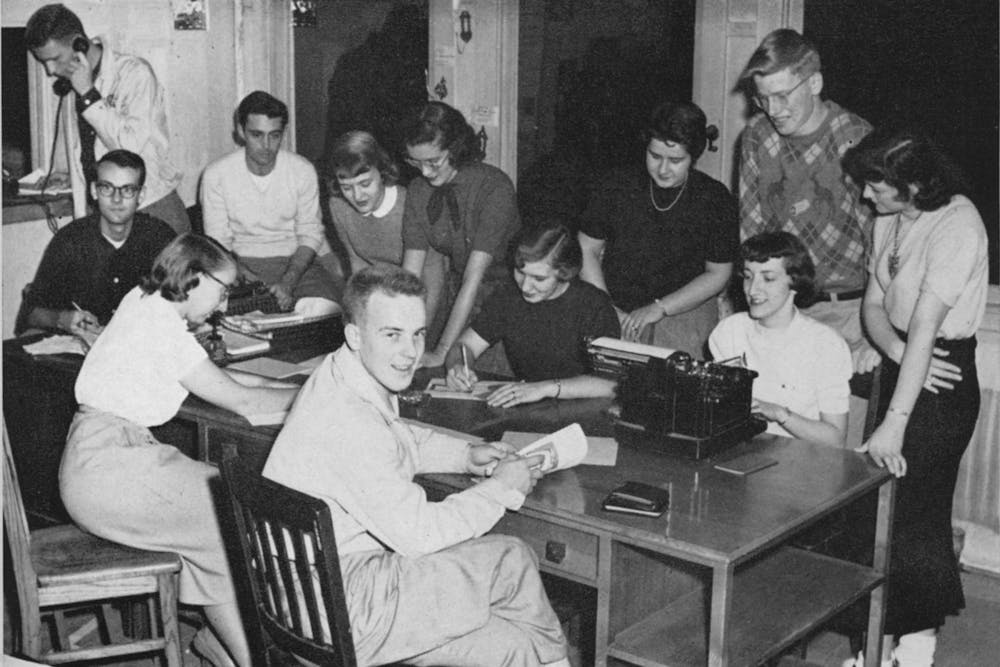100 years: The history of CM Life
Central Michigan University has had 12 presidents, four name changes and six new colleges since its student newspaper began printing in 1919. Although Central Michigan Life has changed dramatically over the past 10 decades, the mission has stayed the same: to cover life on campus from a student's perspective.
History of CM Life
Let’s go back in time to 1919. Professor Harry A. Miller had just returned to Central Normal School after serving in World War I when President E. C. Warriner asked him to transform the Central Michigan Normal Bulletin – which was a monthly internal newsletter for faculty and staff – into a newspaper.
“President Warriner asked (Miller) to create a newspaper, but the purpose was not to do journalism,” said Dave Clark, director of student media and current adviser of Central Michigan Life. "He essentially turned what was the school's newsletter, The Bulletin, into Central Normal Life. The first edition in December 1919 was mostly sports coverage and almost two pages of advertising. They also charged a nickel for the paper and sold subscriptions."
The students, faculty and staff who wrote for Central Normal Life were tasked with writing articles about "good things happening at CMU." Warriner also mailed the publication to high schools as a recruiting tool.
Bryan Whitledge, archivist and manager for university digital records said Life was an organ of the university when it first began.
“You’re not seeing a lot of dissent,” Whitledge said. “You’re seeing news – things that people needed.”

The first staff of Central Normal Life.
The first edition of Central Normal Life was published on Dec. 2, 1919. The faculty writers were: Miller, Frank E. Robinson, Anna M. Barnard, M. Louise Converse, John E. Munson and Warriner. The staff included eight students as well, according to the staff list published in the first edition.
Miller developed the first-ever journalism class at CMU, Clark said, which was housed in the English department. After creating a journalism class and getting more students involved, Miller turned it into a traditional newspaper instead of a public relations piece.
Miller served as editor-in-chief until 1925 when he stepped aside and allowed Arthur Rice to step in as the faculty director of Central Normal Life. At that point, the newspaper was transitioning into a student-run publication. Rice was a reporter at the Saginaw News-Courier before moving to Mount Pleasant, and he was the first adviser to bring real journalism experience to the publication, Clark said.
The very first edition in 1919 included a column titled, “Our first attempt,” which read, “Go forth, Central Normal Life, and carry your message of good cheer and thanks to those who have responded so loyally to your plea to become a child of reality. You are a little fellow, just newly created, but you will grow.”
Grow, it did.
The publication has gone through two name changes since its inception. It was Central Normal Life until 1927 when it was renamed Central State Life. In 1941 it changed again to its current name: Central Michigan Life.
The newsroom also moved multiple times since 1919. It started out in the Administration Building – which was renamed Warriner Hall in 1939 – where it stayed until 1948, when the office was moved into a temporary structure, referred to as the “sheep sheds.” In 1952, CMU sold the structures and moved CM Life to a newer temporary building, also referred to as “sheep sheds,” although this one was considered better among staffers at the time.
“Moving day can’t come any too soon as far as members of the CM Life staff are concerned,” CM Life Adviser Ivan Cole said in 1952, according to the Clarke Historical Library. “Last week’s heavy downpours of rain had them working overtime with mops and buckets and tin cans. I’ll certainly be glad to get under a watertight roof.”
In 1966, CM Life moved to its long-term home: the Anspach Hall basement. The newsroom stayed in Anspach for almost 40 years before moving to its current location on the fourth floor of Moore Hall in 2004.
Making an impact
CM Life was a university publication until the late 1950s, Whitledge said. In 1959, when the department of journalism was established at CMU, CM Life was reluctantly granted editorial independence, meaning the university was not allowed to dictate what could and couldn’t be published.
“(It) professionalized the education, but then also gave some practical experience,” Whitledge said.
In 1963, CM Life covered a tragedy that hit very close to home. On April 7, a fire broke out at the University Plaza – located north of campus near the Student Book Exchange. Reporter and photographer Cheerie Anderson, a sophomore at the time, rushed there to get photos of the fire. While she was taking photos, a brick wall fell, killing her and two other students. CM Life staff published a special edition a day later about the fire and the three students. Andersen was the only CM Life employee to die in the line of duty.
CM Life covered several big stories in 1965. One of the most notable was an article about off-campus housing discrimination, which caused the board of trustees to create an anti-discrimination policy. That same year, Life also covered an investigation by the State Senate regarding administration-faculty relationships.
The publication didn’t have much competition, as it was the only newspaper that focused solely on covering CMU.
Until the Vietnam War started.
In 1968, another student publication began printing on campus: EFIL. “Life” spelled backward, EFIL appealed to students who were part of the growing anti-war movement. The publication was full of counter-culture news and was a parody newspaper run by the Ad Hoc Committee to Bring CMU Out of the Cornfield.
“EFIL really bad-mouthed CM Life and caused CM Life to cover the war better,” Whitledge said. “At first, CM Life was covering it as ‘oh, it’s a good thing we’re going to war,’ and EFIL was like, ‘those stooges over there in Anspach don’t know their ass from a hole in the ground, here’s what’s actually going on. Here’s our man who was serving and saw what was going on.’”
Changing with the times
It was when Jim Wojcik came in 1972 that CM Life really began to expand and reassess its role as student media, creating journalism that impacted the campus community and city. Wojcik began working as the director of student media at CMU in 1972 after President William B. Boyd created the job for him. CM Life had faculty advisers before, but CMU never had a position dedicated to running student media.
When he took over, Wojcik wanted to learn what worked and what didn’t in student media. He visited Michigan State University, Ball State University and Wayne State University, all of which had successful media programs at the time.
“The first thing I had to do was put in a great revenue-generating program,” Wojcik said. “If we had money, we could pay our own bills and didn’t have to worry about what (administrators) could threaten us with.”

Jim Wojcik was a former CM Life adviser.
CM Life had an advertising staff when Wojcik arrived, but he worked hard to expand that part of the organization. That continues today. Though the Student Media Department does receive some university funding and is housed in an academic building, CM Life is mostly self-sustaining, thanks to its student-run ad agency, Gold Media Group.
Other major changes he made were to the print product itself. Wojcik increased printing to three times per week: Monday, Wednesday and Friday. The staff also changed the design from a tabloid-style product to the style that appealed to most newspaper readers of the time – a broadsheet newspaper.
“It was amazing the respect it got when it became a broadsheet,” he said. “We wanted to make it look like it was a real newspaper. Back in that time, there were no tabloid newspapers like there are today.”
It was when Wojcik was nearing retirement in 2001 that CM Life began to experiment with digital journalism. Wojcik's successor, Neil Hopp, is the person who brought CM Life into the digital age.
Hopp attended CMU in the 1960s. He was the first editor-in-chief to lead the staff in its legendary Anspach Hall basement office. He also ended up being the first adviser in the fourth-floor Moore Hall office.
The main challenge Hopp faced as the director of student publications was trying to keep up with rapid changes in technology and educating students about how that technology was changing the journalism industry.
"When (Wojcik) left, the digital age was just dawning," Hopp said. "CM Life was already doing some stuff, but we really pushed the envelope with online. We began posting videos, podcasts started, a lot of photo slideshows – a full digital presence."
When Clark was hired to succeed Hopp in 2013. He scaled back down to two editions each week and switched the focus to online publication. The print publication is no longer a text-heavy broadsheet, but a tabloid-style piece with a focus on art and design.
Today, CM Life prints one edition each week, but publishes content online daily. CM Life’s website receives almost 2 million page views each year, with 800,000 unique users. Clark said the record for views for a Facebook video was 250,000 for a video of a snowstorm.
Social media has allowed CM Life to expand its reach. Measured by likes and followers, CM Life is the No. 4 student media company on Facebook behind the Harvard Crimson and two others. The number of Twitter followers has tripled since 2015 and the company is now focused on growing its Instagram and YouTube audiences. Student journalists also publish podcasts on Spotify, iTunes and Soundcloud.
“The biggest change for CM Life over the past 10 decades has been technology,” Clark said. “CM Life went from a newspaper that was never really distributed outside the city limits of Mount Pleasant to being a nationally-recognized student media company during that 100 years.”







